Jan Weinschenker
Side-by-Side: Reactive vs non-reactive Java
#1about 6 minutes
Understanding the core principles of the reactive manifesto
Reactive systems are designed to be responsive, elastic, and resilient by using a message-driven architecture.
#2about 2 minutes
Visualizing blocking vs non-blocking request models
Sequence diagrams illustrate how non-blocking, fire-and-forget requests improve resource utilization compared to traditional blocking calls.
#3about 3 minutes
An analogy for reactive task distribution
A story about cleaning rooms illustrates how reactive programming breaks large workloads into small, independent tasks for efficient parallel execution.
#4about 2 minutes
Exploring reactive Java frameworks and adoption challenges
Despite numerous frameworks like WebFlux and RxJava, reactive programming faces a steep learning curve and debugging complexities.
#5about 3 minutes
Live code demonstration of imperative Java
A walkthrough of a standard, non-reactive Java method shows a straightforward, blocking approach to fetching and processing API data.
#6about 3 minutes
Live code demonstration of reactive Java
The same API data fetching task is implemented using a reactive, stream-based approach with Spring WebFlux and Project Reactor's Flux.
#7about 3 minutes
Understanding the unique reactive debugging experience
Debugging reactive code reveals its declarative nature, where execution is non-linear and only begins after a subscription is made.
#8about 3 minutes
Q&A on Project Loom and integration challenges
The discussion covers whether Project Loom makes reactive programming obsolete and how to handle integration with non-reactive components like JDBC.
Related jobs
Jobs that call for the skills explored in this talk.
Matching moments
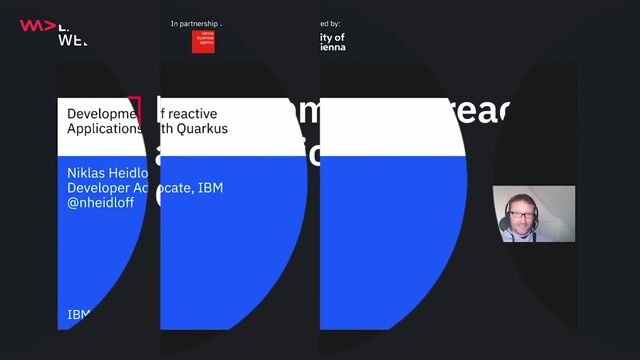
00:17 MIN
Comparing reactive and imperative code performance
Development of reactive applications with Quarkus

43:46 MIN
Q&A on virtual threads, reactive programming, and Java 21
Introduction and pitfalls of Java's new concurrency model

06:51 MIN
The learning curve of reactive programming in Java
Development of reactive applications with Quarkus
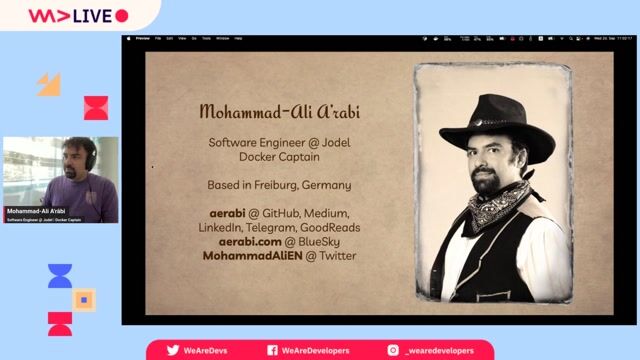
01:18 MIN
The history and evolution of ReactiveX and RxJS
How to Create New RxJS Operators

00:16 MIN
Developing a reactive mindset for RxJS
Practice makes perfect - when it comes to RxJS
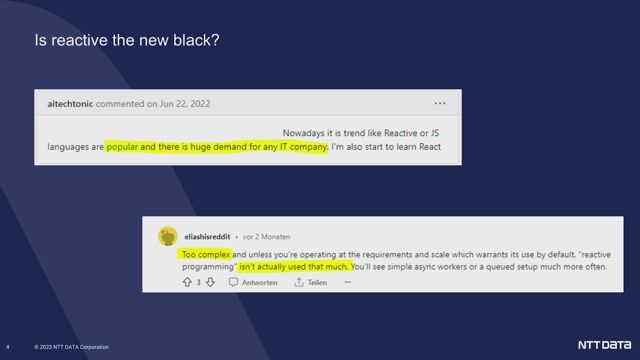
02:03 MIN
Examining the trend and debate around reactive programming
Is reactive the new black? Imperative vs. reactive programming with Quarkus
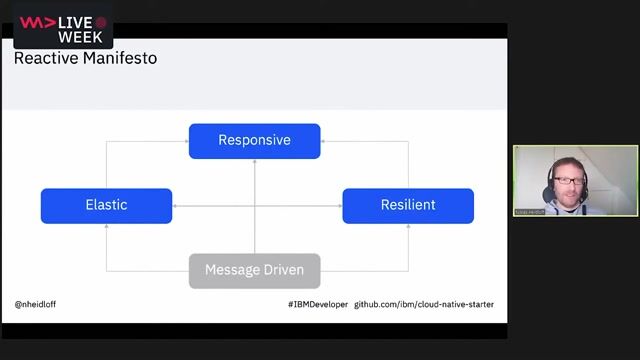
04:28 MIN
Core principles of the reactive manifesto
Development of reactive applications with Quarkus
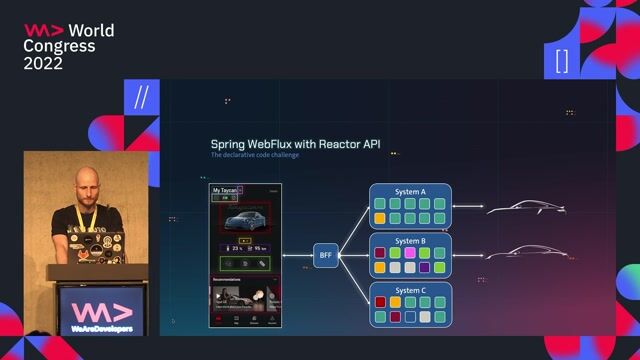
09:38 MIN
Using Kotlin Coroutines to simplify complex reactive code
Back(end) to the Future: Embracing the continuous Evolution of Infrastructure and Code
Featured Partners
Related Videos
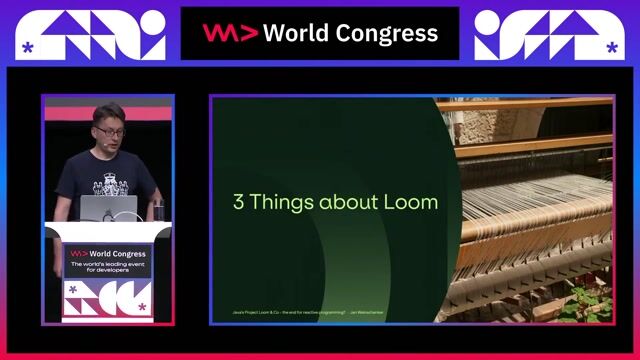 23:58
23:58Java's Project Loom & Co - the end for reactive programming?
Jan Weinschenker
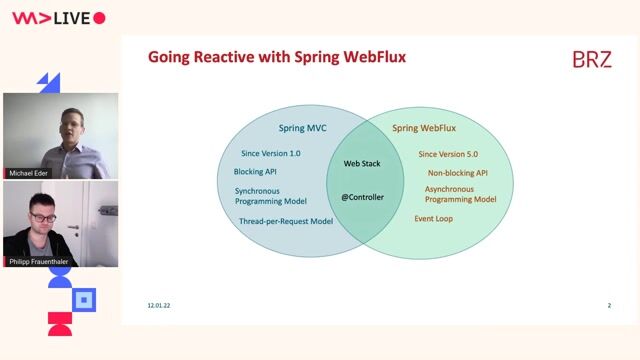 54:18
54:18Going reactive with Spring WebFlux
Michael Eder & Philipp Frauenthaler
 28:12
28:12Is reactive the new black? Imperative vs. reactive programming with Quarkus
Tatiana Chervova
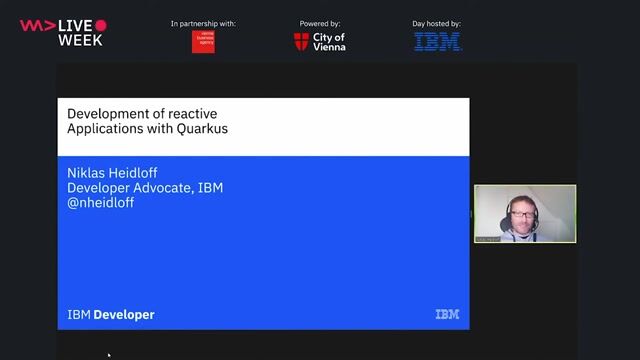 39:10
39:10Development of reactive applications with Quarkus
Niklas Heidloff
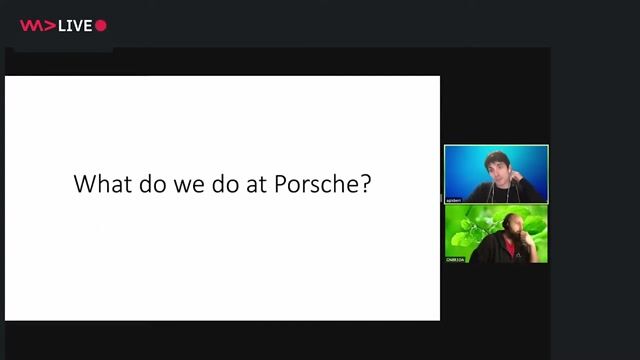 52:24
52:24Slip Through the Boundaries of Legacy Systems with Kotlin and Spring WebFlux
Lukas Georgieff & Alberto Gisbert
 28:43
28:43Bringing back reactivity in "reactive" frontend
Michał Moroz
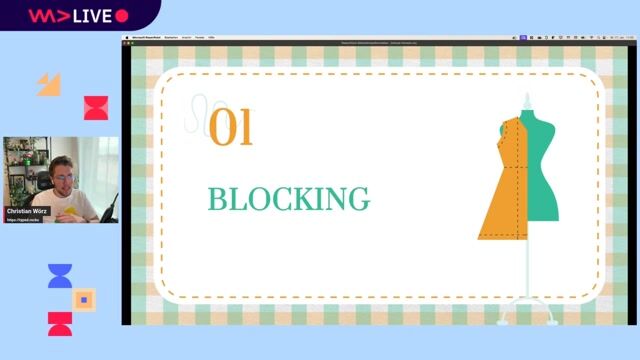 55:30
55:30Java 21: The Revolution of Virtual Threads - A Deep Dive
Christian Woerz
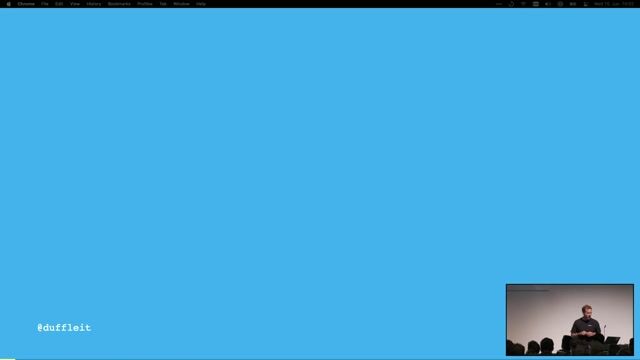 46:24
46:24The Rise of Reactive Microservices
David Leitner
From learning to earning
Jobs that call for the skills explored in this talk.




Principal Backend Architect - Java Refactoring & Modernization
primion Technology GmbH
Remote
API
XML
Java
Spring
+3

Principal Backend Architect - Java Refactoring & Modernization
primion Technology GmbH
Remote
API
XML
Java
Spring
+3



